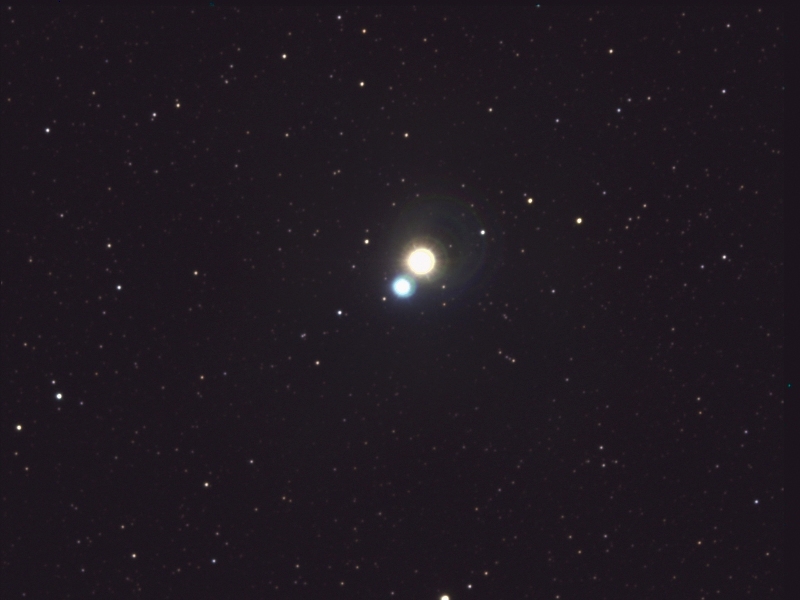|
Date + Time
............................... 1 / 9 /2012 -
18:20 UTC
Location .................................... "Nunki
Observatory" - Skiathos
Optics .........................................
Celestron
C11 HD f/10
Tools
..........................................
CCDsoft
Camera ..................................... SBIG
ST-2000XM with CFW10 (Astrodon filters)
Exposure Time.......................
Luminance: 10 X 30sec RGB: 5 X 60sec (each)
More Details ...........................
Environment Temperature : 24oC Camera Temperature -5οC
Mount ....................................... Paramount
ME
Guiding ....................................
Unguided
Processing Details ................ Photoshop ,
Maxim , CCDsoft
Notes ........................................ Weather:
8/10 - Transparence: 3/6 - Humidity : 70%
Target details ......................... Albireo
(β Cyg, β Cygni, Beta Cyg,
Beta Cygni) is the
fifth brightest star in the
constellation
Cygnus. Although it has the
Bayer designation beta, it is fainter than
Gamma Cygni,
Delta Cygni, and
Epsilon Cygni. Albireo appears to the naked eye to be a
single star of magnitude 3 but through a telescope, even low
magnification views resolve it into a
double star. The brighter yellow star (actually itself a
very close
binary system) makes a striking colour contrast with its
fainter blue companion star.
Albireo is 380
light-years (120 pc)
away from the Earth. When viewed with the naked eye, it
appears to be a single star. However, in a
telescope it readily resolves into a
double star, consisting of Albireo A (amber,
apparent magnitude 3.1), and Albireo B (blue-green,
apparent magnitude 5.1). Separated by 35 seconds of arc, the
two components provide one of the best contrasting double
stars in the sky due to their different colors. It is not
known whether the two components are orbiting around each
other in a physical
binary system. If they are, their orbital period is
probably at least 100,000 years. |
